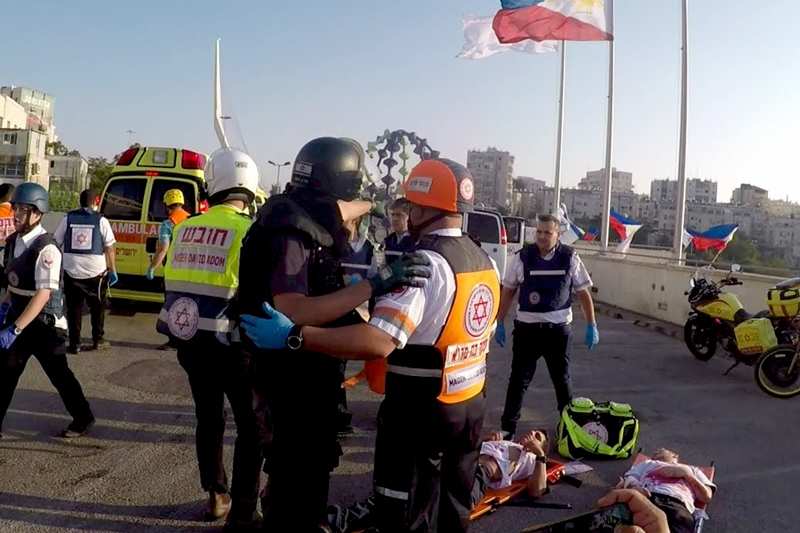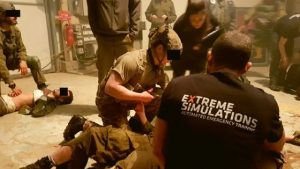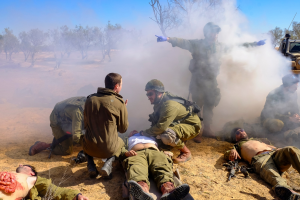Nothing compares to a good story. Whether we are talking about children’s bedtime stories, fun stories that you tell your friends, or… stories that explain extreme events and put things into perspective.
As humans, we live to tell stories. When we make a decision, we base it upon a scenario – which is basically a story.
What is even more interesting is how we tell stories based on facts. They help us understand what happened in a certain place in our absence. We build stories to “see” into the past by combining fragments of information, sensations, experience, feelings, data, objects, and remnants.
Is it a flat tire?
Let’s take a look at an example to better understand how stories are created in our minds by putting bits and pieces together…
Imagine you are driving in your car. It’s an ordinary day, just like any other. Suddenly, there is a knocking noise coming from the wheels. Because you can hear that sound, you understand that something happened in that area, but you’re not yet sure what.
Because you don’t want to cause any more damage to the car or put your life and other drivers’ lives in danger, you stop on the side of the road to evaluate the situation.
Looking at the wheels, you see one of them is flat. You’re thinking, I must have driven over a sharp object, like a screw. It must have punctured my tire. Now I have to change it.
Even though you didn’t see what happened, you can use the facts to deduct the events. Based on them, you build a story of what happened.
What you’re doing is you’re building a story that comes to a conclusion.
Now, what would you have done if the tire wasn’t flat…?
What is the story now?
You will have to gather more information to build the story and understand what happened.
Looking for more rewarding reads? Try Mental Resilience in the Midst of a Crisis
Storytelling in extreme events
Sometimes, only an expert can tell you what happened based on their knowledge and experience. Without a good understanding of the story, it is difficult to make decisions.

But your ability to understand a complex story is influenced by numerous factors:
- In unfamiliar situations, an experience that often helps us might restricts us.
- Anxiety during an event might make it difficult for some people to accept that situation as a reality, while others might jump to extremes too quickly.
- An overload of data forces us to focus on certain details and ignore others.
- Open and proper team discussions will improve the way the story is told and the way the decision-making is done, but improper discourse will sweep the details into a uniform and uncritical story.
- The transfer of information and creation of a common language: making sure that the entire team is connected to information that already exists requires assigning “titles” to certain situations. Sometimes the title may set incorrect working assumptions (for example, calling an injured person “the one with burns” indicates that the person has burns, but it doesn’t indicate that they might also have internal bleeding).
- In stressful situations, the tendency is for tunnel vision and protocol execution. In such a situation it is exceedingly difficult to possess critical thinking. Sometimes you stick to the original plan and ignore any signs that things might be playing out differently.
- When someone has a hammer, every problem becomes a nail: sometimes the story is built according to the discipline of the person who tells it…
You might also like: Principles in Managing a Missing Persons & Casualty Identification Event
As first responders, we need to practice storytelling so we know how to build stories. In order to build an objective story based on facts, you need to know what affects you.
Therefore, it is crucial that you know how to improve your ability to accurately interpret and respond to a story. This is an intellectual effort that requires focus, calm, professionalism, and, most importantly, the ability to ask the right questions.

Proper training will increase your familiarity with yourself and the factors that interfere with your working memory.
Proper training will instill in you the instinct to ask questions – the right questions – not just to perform automatic actions.
FACT: Strictly non-technical simulations should be story-based and well-constructed.
Rules of storytelling for extreme events trainings
Some rules to build the story:
- The simulation boundaries are clear in what is part of the simulation and what is not.
- The story should be full yet concise: the details in the story should allow the trainee to correctly identify the situation.
- The story should be realistic: the trainee should feel that this is something that could happen tomorrow morning.
- The story should be dynamic and develop according to the trainee’s response while maintaining the purpose of the exercise.
- The trainee should use the same tools during a simulation that they use in a real event.

Debriefing is a core part of any training. During the debriefing, a trainer will look at how the trainees built the story, therefore they must ask the following questions:
- What are the gaps between the true story and how the trainees understood it, and what are the reasons for those gaps?
- What were the personal components that led to the decision making?
- What were the professional elements that contributed or hindered the understanding of the story?
- Are the trainees asking the right questions at each stage of the training?
Learn more about training for extreme incidents: The Characteristics of an Extreme Incident
What story will you and your team create based on the facts and data you collect?
To make sure your story reflects the truth, make sure you and your team get trained on a regular basis.
At Extreme Simulations, our experienced trainers are ready to show you how you can build the real stories that lead to a valid conclusion.
GET IN TOUCH
Contact Extreme Simulations now to book a complete training session





